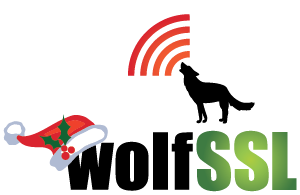We are excited to share our latest enhancement to wolfSSL, which is the addition of ChaCha20 and Poly1305 AEAD cipher suites. Currently they are compatible with the Google server and have the added bonus of also being able to use the more recent ChaCha20 – Poly1305 AEAD constructions. All that we have left to do […]
Read MoreMore TagCategory: Uncategorized
IoT Demo Series #2: wolfSSL Working with Twilio and mbed
You may be familiar in general with the role of Web APIs in IoT scenarios. This demo shows how CyaSSL can easily secure the communications between IoT devices and cloud services. Twilio is a cloud-based Voice and SMS service that allows a client PC or smart phone to be used in building intelligent communications. With […]
Read MoreMore TagUsing wolfSSL with SmartOS
wolfSSL has been tested with and works on SmartOS! SmartOS is an operating system used specifically for databases and in conjuncture with cloud operations. It inherited features from the well known Solaris and has been extended by Joyent to make it great for cloud operators. One of the big things added was disk I/O throttling […]
Read MoreMore TagwolfSSL IPv6 Compatibility
For some time now wolfSSL has been compatible with and will continue to support IPv6. While according to Google`s IPv6 adoption statistics only 4% of the Internet has adopted IPv6, that number is more than doubling every year. At the beginning of 2013 the percentage of IPv6 adoption was only 1.06%, and at the end […]
Read MoreMore TagwolfSSL and openPicus
openPicus provides hardware for use with IoT, M2M, and the cloud. These hardware modules connect using Wifi and Ethernet connections, and as such, these connections need to be secured when communicating. wolfSSL is curious about the current need of our customer and user base for having secure connections on this hardware. Do you want to […]
Read MoreMore TagwolfSSL 3.1.0 Released
CyaSSL 3.1.0 has been released and is now available for download from the wolfSSL website. This release includes bug fixes and new features including: – Fix for older versions of icc without 128-bit type– Intel ASM syntax for AES-NI– Updated NTRU support, keygen benchmark– FIPS check for minimum required HMAC key length– Small stack (–enable-smallstack) […]
Read MoreMore Tagmeta-wolfssl Layer for Yocto and OpenEmbedded
We have been working within OpenEmbedded and the Yocto Project to develop an Open Source SSL/TLS layer designed for incorporating CyaSSL into custom Linux builds for embedded systems. meta-wolfssl contains three completed recipes including the CyaSSL library as well as the CTaoCrypt (wolfCrypt) test and benchmark executables. You can now test and send information quickly […]
Read MoreMore TagCyaSSL and RakNet
Hi everyone, we’re curious if anyone is interested in using CyaSSL-based RakNet. RakNet is a high-performance network API designed for games or other high-performance network applications. It is intended to provide most all features modern games need, such as a master server, autopatcher, voice chat, and cross-platform capabilities. You can learn more at the following […]
Read MoreMore TagwolfSSL FIPS 140-2 Certification Status Update
wolfSSL will soon have FIPS 140-2 level one validation for the wolfCrypt crypto engine! We have entered the lab process and will be out of the lab as soon as August 15, 2014. Our application will then be submitted to NIST for final review. The FIPS certification will support a broad range of wolfSSL customers, […]
Read MoreMore TagwolfSSL Born in the USA!
We receive a lot of questions about the origins of the wolfSSL lightweight SSL library and wolfCrypt software packages. We get asked where they were developed, and by who? These questions usually come from US government agencies and their contractors. Simply stated, mes amis, wolfSSL and wolfCrypt were Born in the USA and written by […]
Read MoreMore Tag
